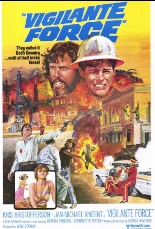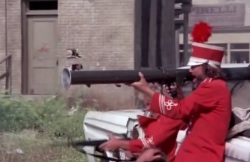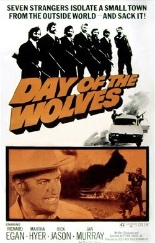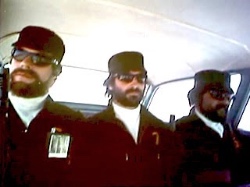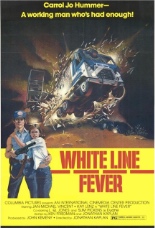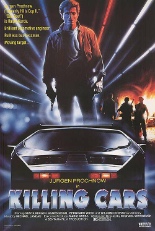
 Jürgen Prochnow (Hitman: Agent 47) is innovative automobile engineer Ralph Korda in Killing Cars, a West German action film from writer/director Michael “Not Paul” Verhoeven (The Nasty Girl), and everything about it is positively Prochnowian. Just don’t ask me what that means. Also don’t ask me why some home-vid copies are called Blitz, a title someone really likes, because the opening credits flash that card enough times to induce seizures. If only Verhoeven had exercised similar aggression in relaying his plot.
Jürgen Prochnow (Hitman: Agent 47) is innovative automobile engineer Ralph Korda in Killing Cars, a West German action film from writer/director Michael “Not Paul” Verhoeven (The Nasty Girl), and everything about it is positively Prochnowian. Just don’t ask me what that means. Also don’t ask me why some home-vid copies are called Blitz, a title someone really likes, because the opening credits flash that card enough times to induce seizures. If only Verhoeven had exercised similar aggression in relaying his plot.
Korda has designed an “electrochemical” car that does not run on gasoline. Thus, this environmentally friendly vehicle has the potential to revolutionize transportation, and he dubs it “the World Car” — snappy name, that. Knowing the World Car would cause demand for oil to plummet, the Arabs see to it that it never will hit the streets. So Korda steals his precious prototype, only to have it stolen from him by the most girlie-looking skate-punk gang on cinematic record — they play backgammon, for Pete’s sake!
 Strangely, the car-thieving gang hates cars, so they spend most of the movie destroying them. After blowing one up with a Molotov cocktail, one of the members exclaims, “Fantastic! Right out of Star Wars!” (Did the German cut of Star Wars include added footage of flaming automobiles? Or did Lucas retropaste that in, too?)
Strangely, the car-thieving gang hates cars, so they spend most of the movie destroying them. After blowing one up with a Molotov cocktail, one of the members exclaims, “Fantastic! Right out of Star Wars!” (Did the German cut of Star Wars include added footage of flaming automobiles? Or did Lucas retropaste that in, too?)
I tolerated the film for a while, reaching an apex when Korda brings home a woman who looks fabulous naked (one-timer Marina Larsen) … and then plummeting to nadir-level when he near-immediately orders her to pack up and leave. So tonally confused is Verhoeven’s film, it plays in part like a screwball comedy without any jokes. Yet if laughs are what you seek, Q-tip your ear canals to maximum circumference in order to take in the flick’s not-a-hit-single theme song of synth-pop excess: “Trying to make a dream come true / Clean machines for me and you / He’ll build a World Car now!”
Killing Cars also stars American TV Fatman William Conrad, The Ambushers vixen Senta Berger and lots of people with umlauts in their names. With a script aimed at Al Gore’s heart, it tries its hardest to be stylish in that whole Eurotrash vibe of “look, ve can do diz Miami Vice thing, too, no?” but mostly, Blitz is the pitz. —Rod Lott

